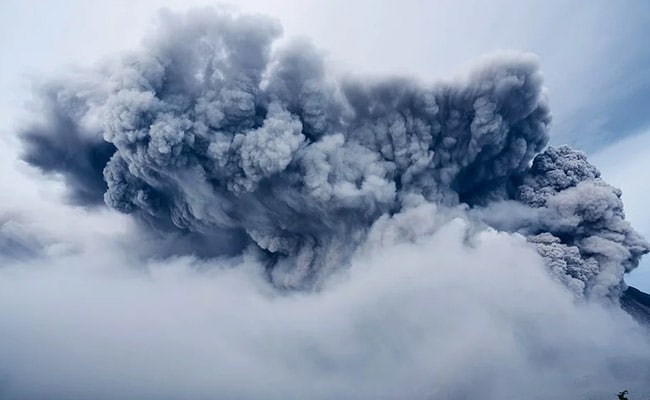
The Bank of Japan (BOJ) ended eight years of negative interest rates and the remnants of other unorthodox policies on Tuesday, enacting a historic shift away from its focus on reflating the economy through decades of massive monetary stimulus.
Analysts said that while it was Japan’s first rate hike in 17 years, rates remained around zero as a fragile economic recovery forced the central bank to slow a further rise in borrowing costs.
The shift makes Japan the last central bank to exit negative interest rates and ends an era when policymakers around the world sought to shore up economic growth with cheap money and unconventional monetary tools.
“Like other central banks, we have resumed normal monetary policy targeting short-term interest rates,” Bank of Japan Governor Kazuo Ueda said at a press conference after the decision.
“If trend inflation intensifies further, it could lead to an increase in short-term interest rates,” Ueda said, without elaborating on the possible pace and timing of further rate hikes.
In a widely expected decision, the Bank of Japan abandoned a policy instituted by former Governor Haruhiko Kuroda in 2016 that imposed a 0.1% levy on excess reserves held by some financial institutions at the central bank.
The Bank of Japan set the overnight lending rate as the new policy rate and decided to guide it in a range of 0-0.1% by paying 0.1% interest on central bank deposits.
“The Bank of Japan took the first step towards normalizing policy today,” said Frederic Neumann, chief Asia economist at HSBC in Hong Kong.
“The elimination of negative rates in particular signals the Bank of Japan’s confidence that Japan has emerged from deflation.”
The central bank also abandoned yield curve control (YCC), a policy in place since 2016 that capped long-term interest rates near zero and stopped buying risky assets.
But the BOJ said it would continue to buy “roughly the same amount” of government bonds as before and step up purchases amid rapidly rising yields, emphasizing that it was focused on preventing any damaging surge in borrowing costs.
The Bank of Japan also said it expected “accommodative financial conditions to remain accommodative for the time being,” suggesting that future rate hikes will be modest.
Japanese stocks rose after the decision was announced. The yen fell below 150 against the dollar as investors took dovish guidance from the Bank of Japan as a sign that interest rate differentials between Japan and the United States may not narrow significantly.
“A normal country”
With inflation exceeding the Bank of Japan’s 2% target for more than a year, many market participants expect negative interest rates to end in March or April.
Expectations for a shift have risen significantly this week after annual wage talks between unions and major companies delivered the biggest pay rises in 33 years.
The end of Kuroda-era stimulus now turns the focus of markets, analysts and the public at large to when the Bank of Japan will raise interest rates further.
On Tuesday, commercial banks announced plans to raise some deposit rates for the first time since 2007.
Nomura Securities and BNP Paribas both expect the Bank of Japan to raise interest rates again before the end of the year.
“Essentially we are a normal country,” said Bart Wakabayashi, Tokyo branch manager at State Street Bank.
“What impact does this have on local households and their spending power? I think that will be the next big discussion, and with that in mind, I don’t think the Bank of Japan will do anything other than what they announced.”
Under Haruhiko Kuroda, the Bank of Japan deployed a massive asset purchase program in 2013, initially aiming to lift inflation to a 2% target in about two years.
The central bank introduced negative interest rates and YCC in 2016 as tepid inflation forced the central bank to adjust its stimulus program to a more sustainable one.
However, as a sharp depreciation of the yen pushed up import costs and public criticism of the shortcomings of Japan’s ultra-low interest rates intensified, the Bank of Japan adjusted the YCC last year to loosen control of long-term interest rates.
Risks remain. A surge in bond yields will raise the cost of financing Japan’s massive public debt, which is twice the size of its economy and the largest among advanced economies.
The end of cheap funds could also jolt global financial markets as Japanese investors accumulate overseas investments in search of yield and move money back home.
Even as it scales back stimulus, the Bank of Japan has downgraded its assessment of the economy and warned of weak consumption. Ueda said inflation expectations have not stabilized at 2%, which means the Bank of Japan may raise interest rates at a slower pace than other central banks in recent years.
“If our price forecasts are significantly exceeded, or even if our median forecast is unchanged, we will see a clear increase in upside risks to the price outlook, which will lead to policy changes,” Ueda said of the likely threshold for further rate hikes. .”
Follow us on Google news ,Twitter , and Join Whatsapp Group of thelocalreport.in
















Kanye West Sued By Ex-Security Guard For Racial Discrimination And Wrongful Termination